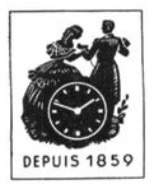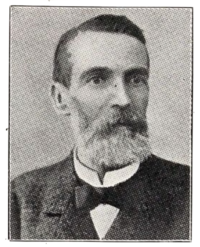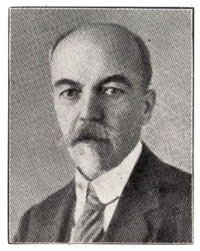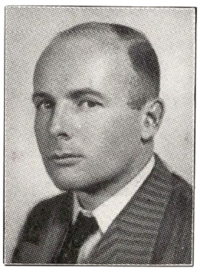Ernest Borel

Ernest Borel is a brand of Swiss watches officially dating to 1859 and re-launched in modern times. The company, originally called Borel et Courvoisier, was one of the finest brands from Neuchâtel and remained in the hands of three generations of the founding family for over 100 years.
Reynier et Roulet
The earliest predecessor to Ernest Borel was the watch finishing workshop of Ulysse Roulet, which is first listed in Indicateur Davoine at Grande Rue in Le Locle in 1845. Roulet's was a small-scale operation, likely a simple workbench, and was part of the etablissage system established there by Daniel JeanRichard.
On June 12, 1848 the firm of Reynier et Roulet was registered in Le Locle. It was a partnership of Henri Reynier, bourgeois of Neuchâtel, and Ulysse Roulet, of La Sagne. The company focused on watchmaking and was listed in Indicateur Davoine at Rue du Marais 236 from 1850 through 1854. It lasted in operation until January 1854, when it was dissolved.
Henri Reynier served on the municipal council and likely continued dealing in watches there through the 1950s. He was replaced on the council by Alfred Borel, perhaps a relative of Jules, who would purchase his company.
Borel & Courvoisier

The modern Ernest Borel company traces their history to 1856 when they claim Jules Borel (1832-1898) began producing watches near Neuchâtel, Switzerland. In 1858, Borel and his brother-in-law, Paul Courvoisier (1834-1896), formed a new company to take over the assets of Henri Reynier Fils. The resulting company was called Borel & Courvoisier and was founded on the existing supplies, watches, and customers of Reynier's firm. Through the first 100 years of the company's existence they cited 1859 as their founding date, incorporating "depuis 1859" into their famous "dancing couple" logo. The modern Ernest Borel company usually cites 1856 instead.
Jules-Alphonse Borel was born May 19, 1832 in Neuchâtel, and married Sophie-Augusta Courvoisier. He would work with Sophie's brothers Paul and Jean in the first decades of the firm and used her name as his alliance name, Borel-Courvoisier.
The partners immediately set about establishing relationships with dealers in London (Choinses & Cie) and New York (Lucien Morel) as well as suppliers across the Swiss Jura. The firm was focused on high-end watches in gold and silver cases, including a flat 19 ligne pocket watch, 14 ligne gold savonette watches for ladies, and a 15 ligne cylinder watch. As early as 1860 Borel and Courvoisier welcomed agents from New York, notably Alexandre Jacot who demanded the very best quality for the customers of Morel. Another American client was Léo Lesquereux, son of a noted botanist and geologist of the same name who produced watches in Fleurier who developed an export relationship after moving to Columbus Ohio. Other watches were shipped to Hamburg, Genoa, Uruguay, Russia, and China.
The ebauches were sourced from Japy Frères in Beaucourt, Robert & Cie in Fontainemelon, Mauler & Ducommun in Travers, and Frotté Chollet in Porrentruy. Finishing was outsourced across the region, particularly in La Sagne, using escapements from Buttes, Bayards, La Côte-aux-Fees, and Couvet, balance springs from Le Locle, balances from Plancemont, and pinions from Moret-Saxonnex. Cases were sourced from Neuveville with guillochage executed in Fleurier, Le Locle, and Geneva. Dials and hands were largely from Le Locle.
Final finishing was done in-house in Neuchâtel, as Borel and Courvoisier wanted to ensure that their watches were of the highest quality. But the company also distributed watches produced by others in the early years, including those from Union Horlogère and Girard-Perregaux in La Chaux-de-Fonds, Englishman Thomas Lees in Fleurier, DuBois and Leroy in Le Locle, Aubert Frères in Le Sentier, and even Roskopf, who had not yet moved to focus on the "everyman's watch".
Borel and Courvoisier also exported machine tools and music boxes. The former were sourced from Gustave Petitpierre of Couvet, who was famous for screw polishing lathes used in London. Music boxes came from Paillard Vaucher & Cie in Sainte-Croix.
In 1867 markets in China, Spain, and the United States were booming. Jean Courvoisier, younger brother of partner Paul, joined the firm that year, becoming a partner in the firm two years later. He traveled to Madrid, Barcelona, and Murcia and was so successful that he would leave the firm after 8 years work to direct the finances for the city of Neuchâtel. Swiss consul to Spain Charles-Edouard Lardet of Fleurier handled imports to the country in the 1870s. American dealers at this time included Benjamin and Ford of New Haven, G.W. Fairchild of Bridgeport, and Hoskinset Isbell of Oswego, all of whom printed their own names on the dials, as did John Brewer in London. Neuchâteloise Jacot and Robert established an export business with Mexico and Spain in 1871.
Since American buyers prized chronometry, Borel and Courvoisier were quick to turn to the Neuchâtel Observatory. They soon began shipping chronometers to America, which were well-received, and exhibiting these abroad. The company participated in the London Exposition in 1862, Philadelphia in 1876, and Paris in 1878, receiving gold medals. Borel and Courvoisier were quick to adopt crown winding, leveraging the winding lever invented by Alexandre Savoye-Keller of Le Locle.
The Cantonal authorities wanted to send a watchmaker fluent in English to Philadelphia to assist in preparing and displaying the wares of Jura watchmakers at the Exposition of 1876, as well as to report back on the progress of American manufacturing practices. They selected Théodore Gribi, an expert adjuster at Borel & Courvoisier in Neuchâtel for the task. Gribi's reports from America warned of American mass production and prompted Jacques David to join him on a tour of factories there. These warnings transformed the Swiss watch industry, though Gribi never returned to Switzerland (or his former employers)!
Asia was also an important market for Borel and Courvoisier, with watches shipped to Japan, China, and India. The firm was represented in Yokohama by Jacot & Cie, though they were deeply impacted there when their agent jumped from a window to disguise his financial impropriety. Still, the company secured another agent and registered numerous brands and trademarks to appeal to the Chinese market in the 1880s.
Ernest Borel

Paul Courvoisier decided to retire from the firm in 1894 and was replaced by Ernest Borel, the son of Jules Borel-Courvoisier. This necessitated a name change, with the firm becoming Borel-Courvoisier on May 1, 1894. Courvoisier died just two years later, as did his partner Jules Borel-Courvoisier on March 2, 1898. Ernest Borel would take the firm to new heights.
Jules Borel's son Ernest (1869-1951) took over management the company from Paul Courvoisier in 1894 and inherited his father's share as well on his death in 1898. The company was renamed Ernest Borel & Cie that year, soon adopting their "dancing lovers" trademark. Borel was assisted by Ad. Dehrot (head of manufacturing) and soon looked to a new headquarters building. In 1906 the firm moved to Rue Louis Favre 15, their address until they moved to a modern factory in 1947.
Jules-Ernest Borel was born to Jules-Alphonse Borel-Courvoisier and Sophie-Auguste Courvoisier on May 11, 1869. He married Marguerite-Lina Berthoud in October 1899 and the couple had many children. Among these was Jean-Louis-Ernest Borel, born November 21, 1903, who would take over the firm from his father.
In 1903, the Ernest Borel name appeared in China, opening a major market for the brand. Until the revolution in 1949, Borel focused on the China market predominately.
Jean-Louis Borel

- See Also: Jean-Louis Borel
Jean-Louis Borel (1903-1993), grandson of the founder, joined the firm in 1927. Ernest Borel faced a health scare in 1936 and turned the management of the company over to his son. He survived 15 more years, however, passing away on February 9, 1951.
Jean-Louis continued to focus on chronometry, obtaining over a thousand observatory certificates in 1946 alone, making it second only to Rolex. The company was also a technical pioneer, using a new balance wheel and other patented components from suppliers.
The company built a new factory in Neuchâtel in 1947. Located on the road to Bienne, it was a modern building designed with watchmaking in mind. It included specialized workshops on the first and second floors above the offices of the firm.
With China closed, Ernest Borel returned to Europe and entered the United States in the 1950s. The company introduced its own regulating device, called "Incastar", in 1947 and this was used in many watches into the 1960s. Most used standard ETA movements, but Borel also made watches with more ordinary ETA and FHF movements at that time. Many were chronometers, with Borel producing 4,172 watches certified by COSC in that period.
Henry DuPasquier joined Ernest Borel in sales before switching his focus to product design. Starting in 1951, DuPasquier began developing the shifting dial that would become a sales sensation for Ernest Borel through the 1950s. Introduced in 1953, the Cocktail watch featured a moving kaleidoscope dial. Although the term was used generically to describe any watch with this look, only Ernest Borel watches could use the Cocktail trademark. The tremendous success of the Cocktail watch spawned a whole range, from tiny ring watches, keyring watches, pendants, brooches, and clocks. One interesting variation was the Hawaii, with an open-worked bracelet.
Borel's lineup included other novelties in the 1950s: The "Rendez-Vous" was an alarm watch with Cal. AS 1930; the 1955 "Dateoptic" had a dial-mounted magnifier for the date; the 1958 "Flash" had an electric light for the dial; and the Sea Gem was a water-resistant model. Most of these were conceived and developed by Henry DuPasquier.
Chronos Holding, Synchron, and ASUAG
By 1968, Ernest Borel production had fallen and the company was absorbed into ASUAG. Jean-Louis Borel was directed to form a holding company for watchmakers and December 18, 1968 the firm was re-named Synchron SA in preparation for this. On March 27, 1969, Doxa and Cyma were merged into Synchron under the leadership of Jean-Louis Borel and the three brands were jointly marketed throughout the 1970s. By 1980, however, the brand was effectively defunct.
Ernest Borel and Doxa were taken over by Aubry Frères by 1981 and experienced a resurgence for a time. It was a well-known brand in the Americas and China, balancing their West End watch brand in the Middle East.
The company was rising again in the 1990s, celebrating "135 years in business" in 1992 despite changes in ownership. Products in the 1990s included the Indigo Sky Line, a chronograph with modern styling using the ETA 7750 automatic movement. Others included the automatic Prussian Blue line and quartz Scarlet Lake line. These shared the novel modern case design and novel strap attachment. The firm re-launched in Germany, then Switzerland, France, Italy, and other countries. But the far east, notably China, was the largest market for the firm.
Ernest Borel Today
The Ernest Borel brand was re-started in La Chaux-de-Fonds, Switzerland in 1997 by a group of Chinese investors. It was relocated to Le Noirmont in 2009. The company was listed on the Hong Kong stock exchange in 2014. Today, the company focuses on China, Eastern Europe, and the United States markets. The official company history now cites 1856 as the founding date rather than the traditional 1859.